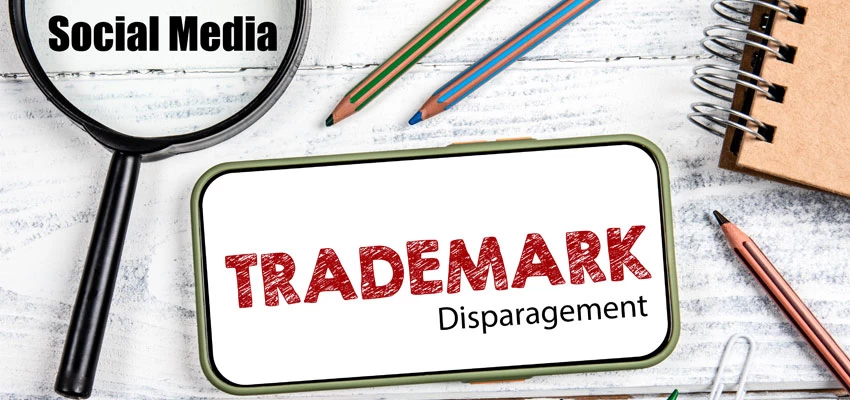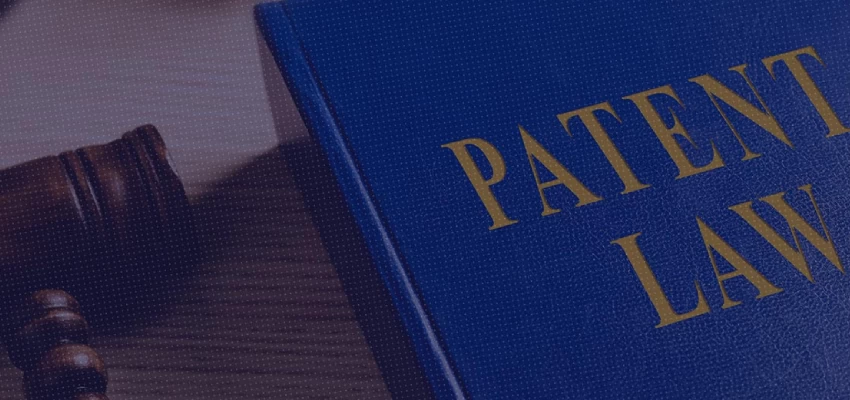Two co-ordinate Single Judge Benches of the Delhi High Court have arrived at opposing conclusions as to whether to grant interim injunction or not in favour of the Plaintiffs/Patentee in a batch of patent infringement suits instituted by Astrazeneca AB and others against various Defendants1 in relation to a pharmaceutical composition TICAGRELOR (the “drug”)2, an oral anti-platelet treatment for Acute Coronary Syndrome.
Vide order dated 8th August 2019, one Single Judge in the case of Astrazeneca AB and Ors. vs. P. Kumar and Ors.3, in a batch of three commercial suits4 (hereinafter referred to as the First batch matters) instituted by the Plaintiffs based on the suit patents i.e. species5, polymorph6 and formulation7 patents covering the drug; revoked the previously granted ad-interim injunctions in favour of the Plaintiffs. The Single Judge reasoned that the admissions made by the Plaintiffs in litigations in foreign jurisdiction and in the submissions pertaining to commercial working details of the genus patent8 and suit patents raised a credible challenge on the validity of the suit patents.
In contrast to the above order, another Single Judge vide order dated 15th January 2020, in the case of Astrazeneca AB and Anr. vs. Emcure Pharmaceuticals Ltd9. , a batch of two commercial suits (hereinafter referred to as the Second batch matters) instituted by the Plaintiffs based on the suit patents but argued only based on the species suit patent covering the drug; arrived at the conclusion that the Plaintiffs have made out a prima facie case in their favour. The Single Judge came to the said conclusion despite the very same grounds being asserted by the Defendants in the First batch of matters and despite the order of the Single Judge in the said matters. However, it is pertinent to note that the Single Judge did not ultimately grant the said interim injunction in favour of the Plaintiffs as the asserted species suit patent expired on 2nd December 2019 (prior to the instant order) and the Defendants had already launched their products.
The Single Judges in both cases, however, directed the Defendants to maintain their accounts of sale from the date of launch of their products and to file duly authenticated reports of the same through affidavits.
Brief facts:
The Plaintiffs owned or owns the following four patents in relation to the drug:
- IN 241229 (hereinafter referred to as “the genus patent”),
- IN 209907 (hereinafter referred to as “the species patent”),
- IN 247984 (hereinafter referred to as “the polymorph patent”) and
- IN 272674 (hereinafter referred to as “the formulation patent”).
The Plaintiffs instituted suits against various Defendants in the years 2018 and 2019 seeking an injunction to restrain the Defendants from selling, marketing or dealing with TICAGRELOR or any product which is in violation of the subsisting suit patents. It is pertinent to note that while the Plaintiffs asserted all the suit patents (species, polymorph and formulation patents) against the Defendants in the interim applications filed in the First batch matters (2018), the Plaintiffs only asserted the species patent in the interim applications filed in the Second batch matters (2019). The Plaintiffs’ action was a result of the Defendants’ launch or proposed launch of various generic versions10 of the drug.
In the First batch matters, vide orders dated 22nd March 2018, 23rd April 2018 and 18th July 2018; the Court initially granted ad-interim injunction orders in favour of the Plaintiffs restraining the Defendants from selling, marketing or dealing with TICAGRELOR tablet or any drug which is in violation of the suit patents. Aggrieved by the said order, the Defendants filed applications for vacation of the said interim injunctions mainly on the following grounds which were also raised in the counter claims filed against the suit patents:
- that the expired genus patent expressly covers and discloses the drug as claimed in the suit patents and that the Plaintiffs have given a false impression that the drug cannot be recognized from the said genus patent and thus the suit patents lacks novelty;
- that there exists sufficient material which comprises admissions by the Plaintiffs to show that the drug is encompassed and claimed in the genus patent and its equivalent patents across the world. Reliance was placed on Form 27 filed in India for the genus patent which expressly refers to BRILINTA and AXCER products being covered by the said genus patent. Reliance was also placed on Patent Term Extension request filed before USPTO in respect of US 6251910 (equivalent to the genus patent) and the alleged admissions in the litigation in US initiated by the Plaintiffs against Mylan INC to enforce US Patent 6251910 (equivalent to genus patent) filed before the United States District Court for the District of Delaware to the extent that the Plaintiffs have admitted that dealing in the drug is in breach of the US Patent 6251910 (equivalent to genus patent).
- that the suit patents lack inventive step, fall within the scope of Section 3(d) of the Patents Act, 1970 (hereinafter the Act) in the light of the disclosure of the expired genus patent and relied upon the Hon’ble Supreme Court decision in the case of Novartis AG vs. Union of India 2013 6 SCC 1 (hereinafter referred to as the Novartis case);
- that the suit patents lack inventive step, fall within the scope of Section 3(d) of the Patents Act, 1970 (hereinafter the Act) in the light of the disclosure of the expired genus patent and relied upon the Hon’ble Supreme Court decision in the case of Novartis AG vs. Union of India 2013 6 SCC 1(hereinafter referred to as the Novartis case);
- that the suit patents lack novelty and inventive step in the light of the disclosure in the prior art document WO 00/034283.
- that the Plaintiffs are in violation of Section 8 of the Act for failing to intimate the Indian Patent Office of the status of all corresponding foreign applications including details regarding grant, refusal, abandonment etc. It was specifically contended that China has revoked the species patent equivalent and refused the polymorph patent equivalent and that Europe and Korea have revoked the polymorph patent equivalent.
- that revocation petitions before the IPAB have been filed against the species and polymorph patents in October 2015 and thus a credible challenge to the said patents exist.
The Plaintiffs essentially contended the following:
- that the genus patent is a Markush structure which covers over 150 quintillion compounds (1.5x1020) and thus a person skilled in the art could not have recognized the drug from the said generic disclosure. The Defendants however contended that the genus patent specifically identified and exemplified 144 compounds and 134 compounds out of them are specifically claimed in claim 8 of the genus patent, thus contending that a person skilled in the art need not experiment with 150 quintillion compounds but only with 144 or 134 compounds which are readily available for the said person to experiment and create or identify derivatives suitable as drug candidates.
- that the ground of lack of novelty is not made out because the genus patent was published (2nd February 1999) after the priority date of the species patent (4th December 1998) and thus the genus patent does not constitute as a prior art document and in any case there is no specific or enabling disclosure of the drug in the genus patent.
- that the ground of lack of inventive step is also not made out that as the derivability of the drug from the general Markush formula in the genus patent is based on hindsight analysis.
- that Section 3(d) of the Act is inapplicable as the Defendants have not been able to point out any known substance from the genus patent of which the drug could be considered a new form/derivative and that mere structural similarity is not sufficient to trigger Section 3(d) of the Act. The Plaintiffs additionally also relied upon the affidavit of Dr. Robert J. Riley filed by one of the Defendants which states that the drug has a vastly superior metabolic establishment which has a direct bearing on the curative effect of the drug and thus asserted that the drug demonstrates enhanced therapeutic efficacy.
- that with respect to the grounds asserted by the Defendants under Section 8 of the Act, the Plaintiffs stated that in so far as the revocations of the patents in Europe and China are concerned, the same have been appealed and it implies an automatic stay on the operation of the revocation orders. The Plaintiffs asserted that there is substantial compliance and no malafide suppression.
- that Form 27 only states that the genus patent has worked through the drug and does not mean that the drug is disclosed in the said genus patent. It was also argued that multiple patents can cover a single product. In response to the arguments regarding the admissions in the US proceedings, the Plaintiffs asserted that in the said litigation the Plaintiffs had also taken a stand that the genus patent was also infringed and the same is permissible and legal under the US laws as coverage is sufficient to institute an infringement action.
In the Second batch matters, while most of the above-mentioned arguments were raised, some additional arguments and issues pertaining to the instant matters are as follows:
- The Plaintiffs only asserted the species patent during arguments.
- The Defendants asserted the ground of prior claiming, such that they argued that date of publication of the respective patents is not relevant as the drug is claimed in claims 1 and 7 of the genus patent.
- The Defendants emphasized on the dichotomy between disclosure and coverage as stated in the Novartis caseand argued that since the drug as claimed in the specific patent is covered under the genus patent and disclosed therein, the species patent is not valid.
- The Defendants cited and relied upon the order of the Single Judge in the First batch matters and thus submitted that no interim injunction ought to be granted.
- One of the Defendants (Emcure) also raised a contention that the suit is barred under Section 10 of the Code of Civil Procedure, 1908 since the said Defendant had already filed a suit before the City Civil Court Pune against the Plaintiff. The Plaintiffs argued that the said suit was based on the right of the Defendant to sell its product (TICAPLAT) in view of the expiry of the genus patent, whereas the instant suit was based on the suit patent and not based on the genus patent.
Decision of the Single Judge in the First batch matters
The Single Judge observed that with respect to the issue as to whether the claims of genus patent disclose the drug can only be determined once the parties have led expert evidence and the same are recorded and cross-examined. However, the Single Judge noted that there are other facts such as admissions made by the Plaintiffs that can be adjudicated at this stage. The Single Judge on perusal of the Form 27 filed by the Plaintiffs for 2017 with respect to the suit patents observed that identical details were provided in the said forms such that all the forms mentioned sale and quantum of BRILINTA and AXCER. The Single Judge thereafter considered the alleged admission by the Plaintiffs in the US proceedings and concluded that the Plaintiffs have acknowledged and stated that dealing in the drug is in breach of the US equivalent of the genus patent.
The Single Judge on the issue of the dichotomy between coverage and disclosure and by relying upon the decision in the Novartis case noted that the Supreme Court in the said case rejected the plea that the scope of coverage is distinct from the scope of disclosure in a patent and that coverage under a patent of the Markush kind cannot lead to any presumption of disclosure, much less any enabling disclosure of all the compounds. The Single Judge thus rejected the Plaintiffs’ argument that although the genus patent is worked through the drug, the said drug is not disclosed in the genus patent. The Single Judge thus held that the Plaintiffs have failed to explain the admissions/conduct with respect to the Form 27 disclosures and its US litigation. The Single Judge held that the said issue of admission/conduct with respect to the Form 27 and US litigation have a material bearing on the issue as to whether the drug is disclosed in the genus patent and is known and anticipated. Moreover, the Single Judge considered that none of these issues were mentioned in the plaint and that it was an omission on the part of the Plaintiffs.
The Single Judge on the issue of applicability of Section 3(d) of the Act held that based on the admissions of the Plaintiffs in the Form 27 and the US litigations, the suit patents cannot be said to be altogether new or completely unfamiliar and thus the suit patents are required to pass the test of enhanced efficacy. The Single Judge noted that the plaint is silent on the aspect of demonstrating enhanced efficacy of the drug and the belated reliance by the Plaintiffs on the affidavit of its expert witness, Dr. Robert J. Riley is also not helpful to the Plaintiffs case. The Single Judge noted that while the affidavit states that the drug as claimed in the species patent has some advantages over the genus patent, it also states that the compounds under both patents can be used as pharmaceutical agents for inhibition of platelet aggregation and thus concluded that the suit patents are not new or unfamiliar to the genus patent. The Single Judge also considered that there is no explanation by the Plaintiffs as to how the advantages stated in the affidavit of lower dose and enhanced metabolic stability would tantamount to enhanced therapeutic efficacy over the genus patent.
On the issue of non-compliance under Section 8 of the Act, the Single Judge concurred with the Plaintiffs that there is reasonable disclosure of relevant facts and that the Plaintiffs have not suppressed any material facts which have a material bearing.
The Single Judge thus held that the Defendants have established a credible challenge to the validity of the suit patents and that the Plaintiffs have failed to establish a prima facie case and that the balance of convenience is in favour of the Defendants. The Single Judge also considered that the drugs sold by the Defendants are at a substantially lower price than that sold by the Plaintiffs11 and thus vacated the previously passed ad-interim injunctions against the Defendants.
It is pertinent to note that the Plaintiffs in the First batch matters approached the Division Bench of the Delhi High Court in appeal against the instant decision of the Single Judge and the matters were disposed of based on the settlement terms arrived at between the parties concerned.
Decision of the Single Judge in the Second batch matters
The Single Judge perused the claims of both the genus and species patents and noted the differences in the substituents of the compound claims. The Single Judge thereafter held that owing to the publication of the genus patent after the priority date of the specific patent, anticipation under Section 13 of the Act is ruled out. The Single Judge also acknowledged that claim 8 of the genus patent specifically listed 144 compounds and specifically claimed 134 compounds, however, the drug although covered under the Markush of the genus patent is not part of the said 144 or 134 compounds
On the issue of the Form 27 disclosure, the Single Judge noted that prior to the existence of the species patent, the Form 27 filed in respect of the genus patent disclosed that the patent is not worked. The Single Judge observed that it is only after the drug was manufactured and tested under the species patent that the Plaintiffs claimed that the genus patent is also worked.
On the issue of Plaintiff’s admissions in the US litigation, the Single Judge noted that it was never the case of the Plaintiffs that its drug is not covered under the genus patent and that the Plaintiff’s stand is that the drug has been specifically disclosed in the species patent and that the teachings in the genus patent do not in manner suggest that a stable, active, less-toxic compound can be formulated out of the individual permutation and combinations of making 1.5 x 1020 compounds.
The Single Judge referred to the Novartis case and observed that although the Hon’ble Supreme Court noted that the law in the country should not be developed on the lines where there is a vast gap between the coverage and disclosure, it however acknowledges the fact that the scope of the patent should be determined from the intrinsic worth of invention and not by the artful drafting of the claim. The Single Judge also observed that the Supreme Court in the said case did not hold that in no case a species patent can be granted once a genus patent had been granted.
On the issue of suit being barred under Section 10 of the Code of Civil Procedure, 1908, the Single Judge held that since the Defendant has failed to clarify as to how the cause of action in the two suits are the same, the instant plea cannot be entertained.
The Single Judge thus held that the Plaintiffs’ claim that the drug was produced and marketed under the species patent despite being covered under the genus patent, is based on material on record and held that the Plaintiffs has made out a prima facie case in their favour. However, the Single Judge noted that an interim injunction cannot be granted as the species patent stood expired on 2nd December 2019 and the Defendants having already launched their products.
Analysis
The above analysis of the two decisions based on almost identical facts points out that the question as to what constitutes “Coverage” and “Disclosure” in the context of genus and species patent is still uncertain. In fact, the interpretation of two Co-ordinate Judges of the Delhi High Court of the decision of the Hon’ble Supreme Court on this point of law is completely different. The determination of the distinction between these two terms is the core of the instant patent infringement suits and will most likely be for most pharmaceutical product inventions. It is pertinent to note that even the issue as to what constitutes credible challenge to the validity of the suit patent to warrant denial of interim injunction, is very subjective. While one Judge was convinced that the admissions in the Form 27 and the US litigations were evidence of a credible challenge to the validity of the suit patent, the other Judge concluded otherwise.
It is pertinent to note that recently in another set of orders issued in December 2019 by a Single Judge of the Delhi High Court in patent infringement suits filed by Bristol-Myers Squibb Holdings Ireland Unlimited Company & others against various Defendants[ Emcure, Torrent, Cipla, Alkem and Indoco.]; the Court passed ad-interim injunctions in favour of the Plaintiffs and against the Defendants. It is noteworthy that the issues in the said litigation also hinged on genus vs. species patent disclosure and coverage, disclosures in Form 27 and admissions in corresponding foreign litigations. Some of the Defendants in the said litigation have challenged the order of the Single Judge before the Division Bench of the Delhi High Court and the matter is pending adjudication.
[The author is Principal Associate in IPR practice in Lakshmikumaran & Sridharan in New Delhi]
- Micro Labs Limited, Natco Pharma Limited, Dr. Reddy’s Laboratories Limited, Emcure Pharmaceuticals Limited and MSN Laboratories Limited.
- Sold by the Plaintiffs under the brand name BRILINTA and by its licensee, Sun Pharmaceuticals Ltd. under the brand name AXCER
- 262(2019)DLT118 dated 8th August, 2019.
- CS(COMM) 749/2018 (Micro Labs Limited), CS(COMM) 792/2018 (Natco Pharma Limited) and CS(COMM) 1023/2018 (Dr. Reddy’s Laboratories Limited).
- IN 209907- expired on 2nd December 2019.
- IN 247984
- IN 272674
- IN 241229- expired on 14th July 2018.
- CS(COMM) 561/2019 (Emcure) and CS(COMM) 562/2019 (MSN); Order dated 15th January 2020
- Micro Labs- BIGRELOR; Dr. Reddy’s-TICAFLO; Emcure and MSN- TICAPLAT and TIARE
- Plaintiffs sold their product originally at 50 INR per tablet and later reduced to 30 INR per tablet (not certain whether this reduction was undertaken at the time of decision in the First batch matters). The Defendants sold their products at reportedly 20/25 INR per tablet (difference is based on the facts recorded in the two Singe Judge orders)











